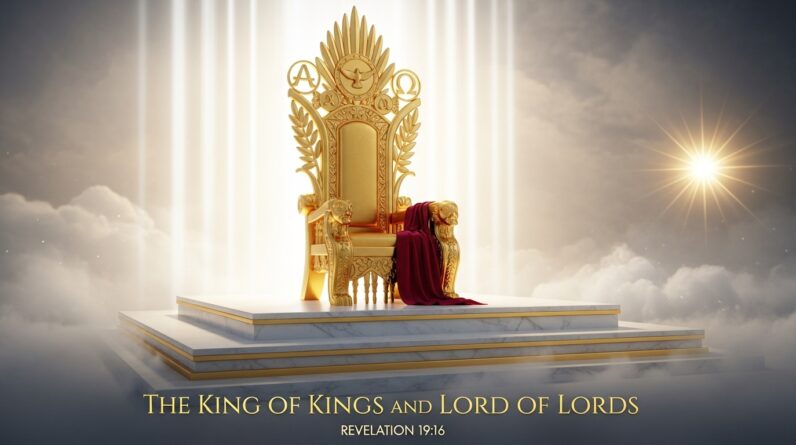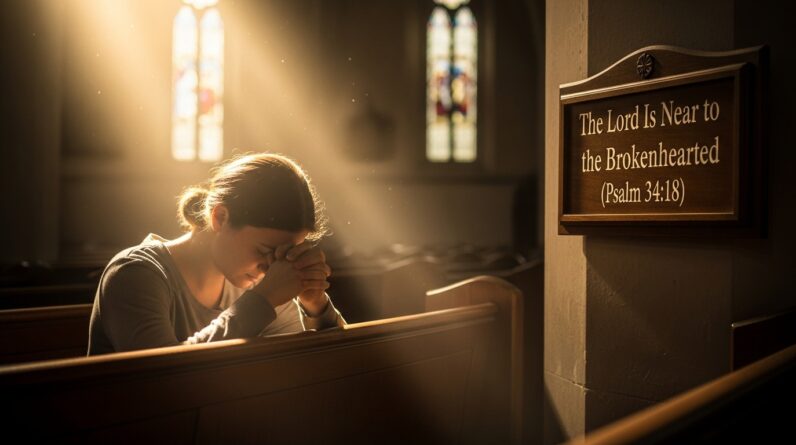In the book of Revelation, John paints a vivid picture of a new, breathtaking reality: a new heaven and a new earth. Revelation 21:1 provides a glimpse into this apocalyptic hope, as John describes seeing a new heaven and a new earth “for the first heaven and the first earth had passed away.” This passage offers reassurance and comfort, reminding us that amidst the chaos and uncertainty of our world, a greater hope awaits us, where pain, suffering, and sorrow will be no more. Revelation 21:1 invites us to imagine a future filled with promise, reminding us that even in the midst of darkness, there is a hope that cannot be extinguished.
The Context of Revelation
Revelation, also known as the Apocalypse of John, is a unique and intriguing book within the New Testament. It is often categorized as apocalyptic literature, which is a genre of writing that emerged during times of crisis or persecution. The book of Revelation is believed to have been written by the apostle John while he was exiled on the island of Patmos. Its purpose was to provide hope and encouragement to the early Christian communities who were facing intense persecution under the Roman Empire.
Revelation as an Apocalyptic Text
Apocalyptic literature is characterized by its use of symbolic language, vivid imagery, and a focus on the end times or eschatology. It seeks to convey a message of divine judgment, ultimate victory, and the restoration of God’s kingdom. In Revelation, John uses powerful imagery and symbolic language to convey his message to the audience. Through visions, dreams, and symbolic representations, John presents a picture of the future and the ultimate triumph of God over evil.
Authorship and Audience of Revelation
The authorship of Revelation has been a topic of debate and speculation among scholars. Traditionally, the book is attributed to the apostle John, the brother of James and one of the twelve disciples of Jesus. However, some scholars argue that the author of Revelation may have been a different individual or even a group of individuals who used the name of John as a pseudonym.
The intended audience of Revelation was the seven churches in Asia Minor, which were facing persecution and challenges to their faith. The book was meant to encourage and strengthen these communities in their commitment to Christ and to provide them with a vision of hope amidst their suffering. However, the message of Revelation continues to resonate with believers throughout history, offering hope and encouragement in times of trial.
The Literary Structure of Revelation
Revelation is often acknowledged as a highly complex and intricate book, characterized by its rich symbolism and vivid imagery. Despite its complexity, there is a discernible structure to the book that helps to provide coherence and guide the reader through its various sections and themes.
The book of Revelation can be divided into three main sections: the letters to the seven churches (Chapters 1-3), the vision of the heavenly throne room and the seals, trumpets, and bowls (Chapters 4-16), and the culmination of God’s plan in the final victory over evil (Chapters 17-22).
Within this overall structure, there are additional patterns and repetitions that reinforce key themes and highlight the cyclical nature of the book. These include the use of the number seven, which represents completeness and perfection, and the repetition of praise and worship scenes in heaven. Understanding the literary structure of Revelation helps to provide a framework for interpreting its message and themes.
Interpreting Revelation 21:1
Revelation 21:1 is a pivotal verse in the book, marking the beginning of the final phase of God’s plan for redemption and the ultimate triumph of good over evil. It is a verse that is filled with hope, promise, and the expectation of a glorious future.
The New Heaven and New Earth
In Revelation 21:1, John sees a vision of a new heaven and a new earth. This imagery conveys the idea of renewal and restoration, emphasizing the transformative power of God’s love and the redemption of all creation. It speaks of a future where the brokenness and sorrow of the present world will be replaced with a new reality, free from sin and suffering.
The Holy City, the New Jerusalem
In addition to the new heaven and new earth, John also sees the Holy City, the New Jerusalem, descending from heaven. This city is described as a place of great beauty and magnificence, shining with the glory of God. It is a symbol of the divine presence and the dwelling place of God with humanity. The New Jerusalem represents the culmination of God’s plan for reconciliation and the establishment of a perfect and eternal kingdom.
The Bride of the Lamb
In Revelation 21:1, the New Jerusalem is also referred to as the bride of the Lamb. This imagery reflects the deep and intimate relationship between Christ and the Church. It symbolizes the union of Christ and his followers, who are cleansed and made pure through his sacrifice. The bride of the Lamb represents the redeemed people of God, who will dwell with him forever in the New Jerusalem.

The Significance of Revelation 21:1
Revelation 21:1 holds great significance for believers, as it speaks to the ultimate fulfillment of God’s promises and the hope that is found in Christ.
Restoration and Renewal
The image of the new heaven and new earth in Revelation 21:1 speaks to the ultimate restoration and renewal of all creation. It reminds us that God’s plan for redemption extends beyond humanity to include the entire cosmos. This gives us hope that the brokenness and suffering we experience in this present world will one day be replaced with a new reality where all things are made right and whole.
Hope in the Midst of Persecution
For the early Christian communities who were facing intense persecution and hardship, the vision of the new heaven and new earth, as described in Revelation 21:1, would have been a source of great hope and encouragement. It offered them assurance that their present suffering was not in vain and that God would ultimately bring about justice and vindication.
The Ultimate Victory of God
Revelation 21:1 represents the culmination of God’s plan for redemption and the ultimate victory over evil. It assures believers that, despite the trials and challenges they may face in this present age, God is ultimately in control and will bring about the defeat of all forces of darkness. This message provides comfort and reassurance to believers, reminding them that they are part of a larger narrative of God’s triumph over evil.
Theological Themes in Revelation 21:1
Revelation 21:1 encompasses several key theological themes that are central to the Christian faith and offer insight into God’s ultimate purposes.
Cosmic Redemption and Reconciliation
The vision of the new heaven and new earth in Revelation 21:1 speaks to the cosmic scope of God’s redemptive plan. It emphasizes the universal nature of God’s love and his desire to restore all things to their intended purpose. This theme echoes throughout Scripture, reminding us that God’s plan of redemption extends far beyond individual salvation to the cosmic reconciliation of all things.
Love and Unity in the New Jerusalem
The portrayal of the New Jerusalem as the bride of the Lamb highlights the themes of love and unity within the Christian community. It reminds us of the profound love that Christ has for his followers and the unity that is found in our shared identity as the redeemed people of God. This imagery serves as a model for how we are called to love and support one another, creating a community of faith that reflects the love and unity of the New Jerusalem.
Divine Presence and Dwelling
The image of the Holy City, the New Jerusalem, as the dwelling place of God emphasizes the intimate relationship between God and his people. It reminds us that our ultimate destiny is to be in the presence of God, dwelling with him forever. This theme highlights the importance of cultivating a deep and personal relationship with God and living in constant communion with him.

Eschatological Hope in Revelation 21:1
Revelation 21:1 offers a vision of eschatological hope, which is the hope and anticipation of the final consummation of God’s kingdom and the fulfillment of his promises.
Fulfillment of God’s Promises
Throughout the Bible, God makes numerous promises to his people, including the restoration of creation, the defeat of evil, and the establishment of a perfect kingdom. Revelation 21:1 speaks to the fulfillment of these promises, assuring believers that God is faithful and will bring about the ultimate fulfillment of all his covenantal promises.
Transformation and Resurrection
The vision of the new heaven and new earth in Revelation 21:1 speaks to the transformative power of God’s love and the promise of resurrection. It reminds us that, in Christ, we have the hope of being transformed and made new. Just as the present earth will be transformed into a new creation, so too will our earthly bodies be transformed into glorious resurrection bodies.
Eternal Life and Hope of Believers
Revelation 21:1 speaks to the hope of eternal life that is promised to believers. It assures us that, in the new heaven and new earth, we will experience the fullness of life in the presence of God. This hope of eternal life sustains us in the midst of trials and challenges, reminding us that our present sufferings are temporary and that we have a glorious future awaiting us.
Comparing Revelation 21:1 with Other Biblical Texts
Revelation 21:1 is a rich and complex verse that can be illuminated by comparing it with other biblical texts that share similar themes and imagery.
Isaiah 65:17-25
Isaiah 65:17-25 shares similarities with Revelation 21:1 in its portrayal of a new heaven and new earth. Both passages speak of the restoration and renewal of creation, the absence of sorrow and pain, and the joy and peace that will be experienced in the presence of God. This comparison further reinforces the cosmic scope of God’s redemptive plan and provides additional assurance of the ultimate fulfillment of his promises.
2 Peter 3:13
2 Peter 3:13 also speaks to the hope of a new heaven and new earth, echoing the imagery found in Revelation 21:1. It emphasizes the promise of righteousness and the establishment of God’s kingdom. This comparison highlights the continuity of this theological theme throughout Scripture and adds further depth and significance to the hope found in Revelation 21:1.
Matthew 5:17-18
In Matthew 5:17-18, Jesus affirms the eternal nature of God’s word and his faithfulness to fulfill all that has been written. This passage provides a foundation for understanding the fulfillment of God’s promises, as described in Revelation 21:1. It reassures believers that the envisioning of a new heaven and new earth is not a departure from God’s previous revelation but a continuation and fulfillment of his plan for creation.
Historical and Cultural Background
To fully appreciate the significance of Revelation 21:1, it is important to consider the historical and cultural context in which the book was written.
Apocalyptic Literature in the Ancient World
Apocalyptic literature was not unique to the book of Revelation but was a distinct genre that emerged during times of crisis and persecution. This genre often employed symbolic language and vivid imagery to convey a message of hope and encourage perseverance among the oppressed. Understanding the conventions and motifs of apocalyptic literature helps to provide insight into the ways in which Revelation 21:1 would have been understood by its original audience.
The Roman Empire and Christian Persecution
The early Christian communities to whom Revelation was addressed were facing intense persecution under the Roman Empire. The emperor at that time, Domitian, demanded worship of him as a deity and sought to suppress Christianity. This context of persecution and opposition helps to explain the urgent and prophetic tone of the book and the emphasis on hope and endurance.
The Importance of Hope in Apocalyptic Times
Apocalyptic literature, including the book of Revelation, served as a source of hope and encouragement for believers during times of crisis and uncertainty. It reminded them that God was in control, that evil would ultimately be defeated, and that their present sufferings were not in vain. This message of hope was crucial for the early Christian communities as they faced persecution and sought to remain faithful to Christ.
Relevance for Contemporary Believers
Though Revelation was written in a specific historical and cultural context, its message and themes continue to be relevant for believers today. Revelation 21:1 offers hope and encouragement for all who are facing trials and challenges in their faith.
Inspiring Hope and Encouragement
Just as Revelation 21:1 provided hope and encouragement for the early Christian communities, it continues to inspire believers today. The vision of a new heaven and new earth reminds us that our present sufferings are only temporary and that a glorious future awaits us in the presence of God. This hope sustains us in difficult times, assuring us that our labor in the Lord is not in vain.
A Call to Faithfulness and Perseverance
The message of Revelation 21:1 is a call to faithfulness and perseverance in the face of opposition and persecution. It reminds us that our ultimate victory is assured and that we are called to remain steadfast in our commitment to Christ. This principle remains relevant for believers today, as we navigate the challenges and trials of living out our faith in a fallen world.
Living in Anticipation of God’s Promises
Revelation 21:1 calls believers to live in anticipation of the fulfillment of God’s promises. It reminds us that our present reality is not the end of the story and that we are called to live with an eternal perspective. This means living with hope, seeking to embody the values and principles of God’s kingdom in our daily lives, and eagerly anticipating the day when all things will be made new.
Analyzing Various Interpretations
Revelation 21:1 has been the subject of various interpretations throughout history. These interpretations are often shaped by different theological frameworks and understandings of the book as a whole.
Futurist Interpretation
One interpretation of Revelation 21:1 is the futurist view, which sees this verse as describing literal events that will occur in the future. According to this view, the new heaven and new earth represent a physical and cosmic transformation that will take place at the end of time, ushering in the eternal state. This interpretation emphasizes the future fulfillment of God’s promises and the physical restoration of creation.
Preterist Interpretation
Another interpretation is the preterist view, which sees Revelation 21:1 as describing events that were fulfilled in the past. According to this view, the new heaven and new earth represent a transformative and symbolic change that took place with the coming of Christ and the establishment of the Church. This interpretation emphasizes the spiritual and symbolic significance of the vision, seeing it as a metaphor for the new covenant and the birth of the Church.
Idealist Interpretation
The idealist interpretation takes a more symbolic and allegorical approach to Revelation 21:1. According to this view, the new heaven and new earth represent spiritual realities rather than literal events. This interpretation emphasizes the ongoing spiritual transformation that takes place in the life of believers and the eventual consummation of God’s kingdom. It sees the vision in Revelation 21:1 as a powerful image of hope and encouragement, rather than a prediction of future events.
Application to Christian Living
Revelation 21:1 has profound implications for how believers are called to live out their faith and engage with the world around them.
Finding Hope in Difficult Times
The vision of the new heaven and new earth in Revelation 21:1 reminds us of the importance of finding hope in difficult times. It encourages us to fix our eyes on the promises of God and to trust that he is at work, even in the midst of our trials and challenges. This hope empowers us to persevere and remain faithful, knowing that God’s ultimate victory is assured.
Living with an Eternal Perspective
One of the key applications of Revelation 21:1 is the call to live with an eternal perspective. This means recognizing that our present reality is not the end of the story and that our ultimate destiny is in the presence of God. Living with an eternal perspective enables us to prioritize the things of God, live with a sense of purpose and mission, and invest in the things that have eternal significance.
Engaging in Kingdom Work
Revelation 21:1 reminds believers of the ultimate goal of God’s plan for redemption and the establishment of his kingdom. It calls us to actively engage in the work of God’s kingdom, seeking to bring about transformation and renewal in our personal lives, in our communities, and in the world around us. It is a call to live out our faith with conviction and to be agents of hope and reconciliation in a broken and hurting world.
In conclusion, Revelation 21:1 offers a vision of hope and assurance for believers. It reminds us of God’s ultimate plan for restoration and renewal, the victory of good over evil, and the fulfillment of his promises. This verse speaks to the ongoing relevance and power of the book of Revelation, providing guidance and encouragement for believers in every generation. As we navigate the challenges and trials of life, may we find hope and strength in the promise of Revelation 21:1 and live in anticipation of the ultimate victory of God.







